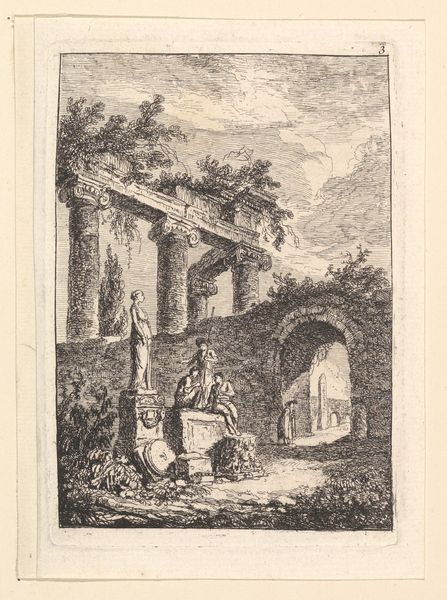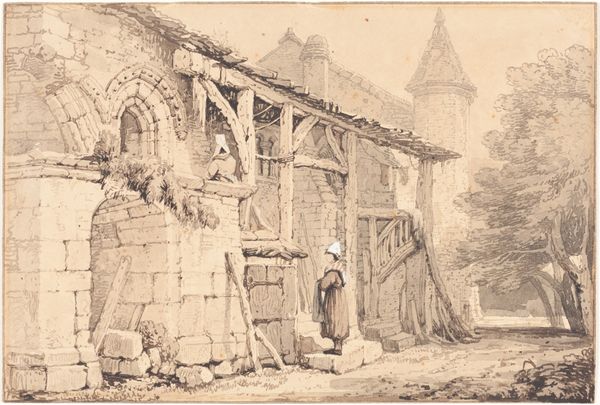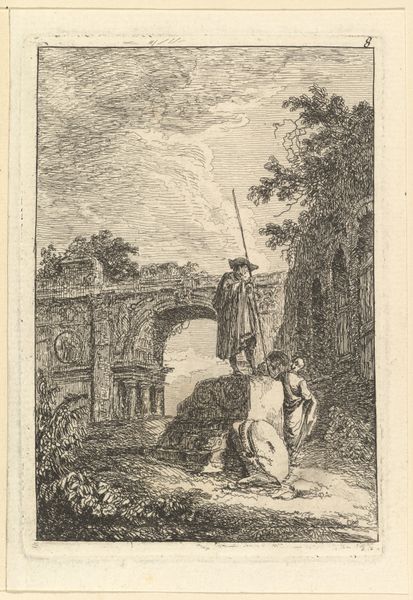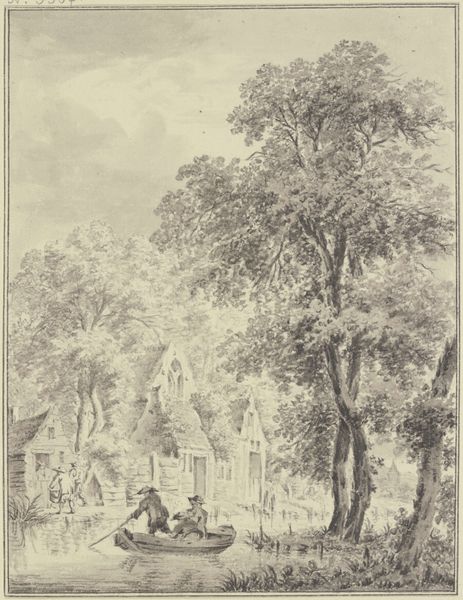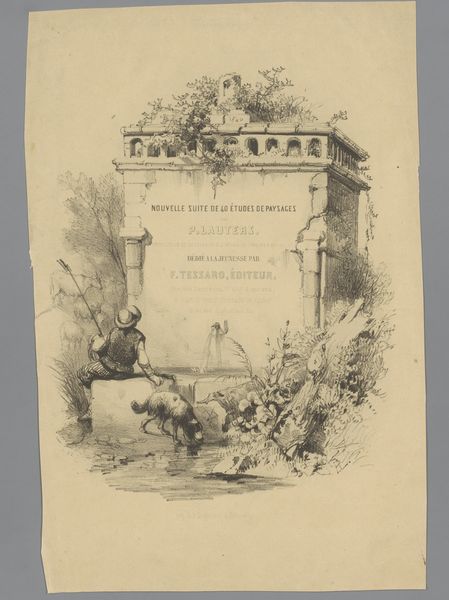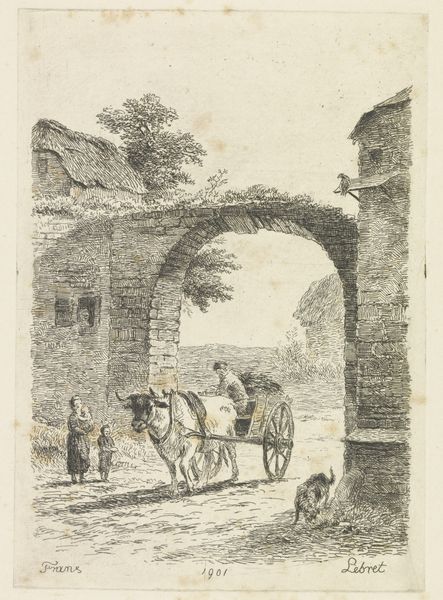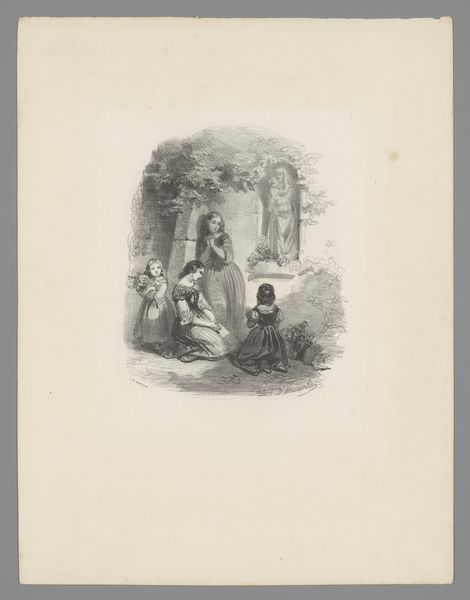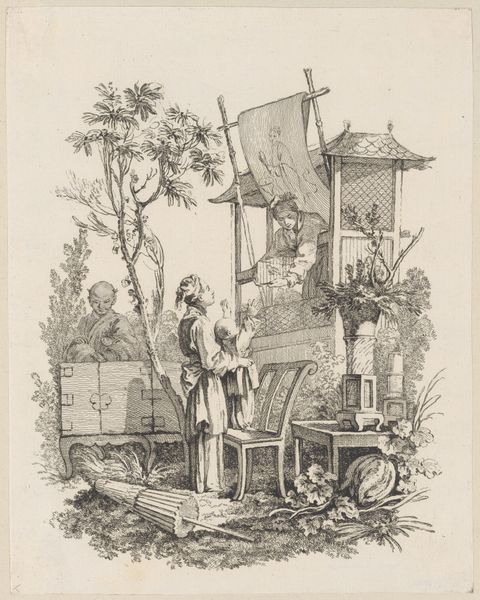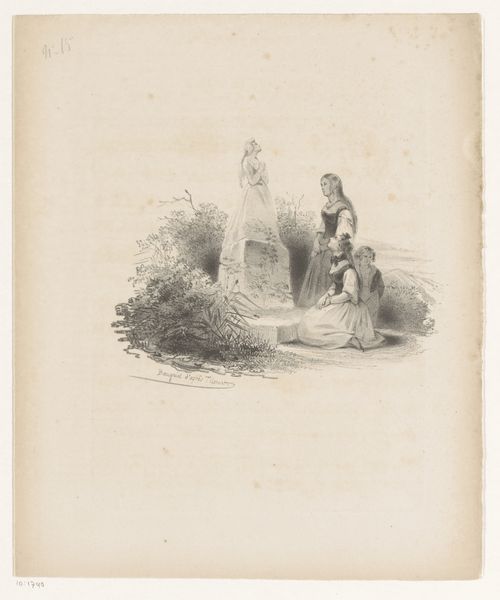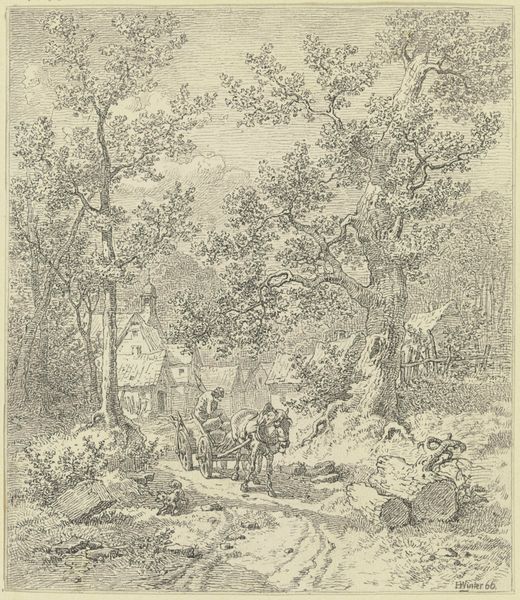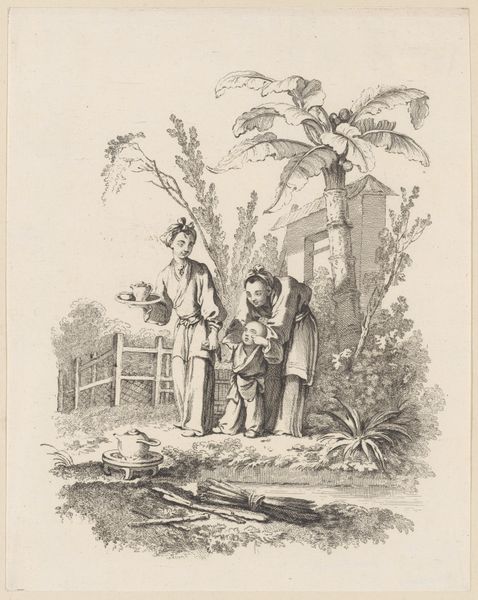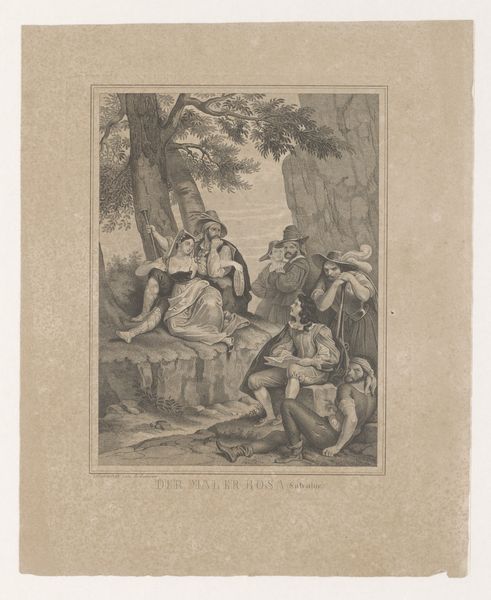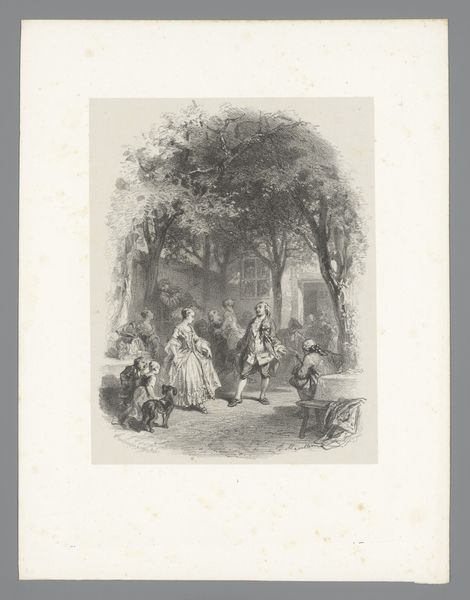
En mand vander heste ved en brønd, mens en kvinde henter vand og en dreng hjælper hende 1805 - 1888
0:00
0:00
drawing, lithograph, print
#
drawing
#
16_19th-century
#
lithograph
# print
#
landscape
#
genre-painting
Dimensions: 244 mm (height) x 196 mm (width) (bladmaal)
Curator: Here we have Fortuné Ferogio’s lithograph, "A Man Waters Horses at a Well, While a Woman Fetches Water and a Boy Helps Her", dating sometime between 1805 and 1888. It’s a scene of daily life, printed in delicate detail. What’s your first impression? Editor: It feels very peaceful. The composition leads the eye from the horses and figures around the well to the ruins in the background. There's a stillness, even with the implied movement of water and the horses drinking. Curator: The means of production here are key to understanding this genre scene. Lithography allowed for relatively quick reproduction, making images like this accessible to a broader audience and contributing to the distribution of visual narratives about rural life. Consider the materiality: paper, ink, the labor of the artist and the printer involved in its consumption. Editor: The well itself is fascinating. It is clearly of classical design but in a state of decay. This could symbolize the passing of time, the endurance of tradition, or even the cyclical nature of life with humans reliant on nature represented by the well and tree, no matter the era. Curator: Absolutely. The wear and tear on the well, the rough-hewn stone, contrasts sharply with the refinement of the lithographic technique. It is a commentary on the value and depiction of manual labor in society through contrasting visual codes. Editor: Note how even small details are important. Three hats are hanging up near the well, maybe they tell a symbolic story? One each for the family: father, mother, and son, or maybe even traveler? The well is the focal point of the picture; it is the common bond for all people coming and going. Curator: Ferogio seems intent on imbuing dignity into the routine tasks of these figures. The lithograph's monochrome allows us to concentrate on the actions and the structure, further suggesting it is an exercise in depicting the material nature of labor itself. Editor: This really shows the lasting power of archetypal symbols. Water as sustenance, the well as a communal gathering place – these are potent images that resonate across time and cultures. Ferogio reminds us of that simple connection, that continuity. Curator: I appreciate seeing how a relatively simple scene, through the material constraints of the era and its careful observation of everyday life, speaks to both larger economic factors and the personal impact of labor. Editor: I’ll leave contemplating those visual symbols that transcend time, revealing lasting aspects of human experience with Ferogio's creation.
Comments
No comments
Be the first to comment and join the conversation on the ultimate creative platform.
